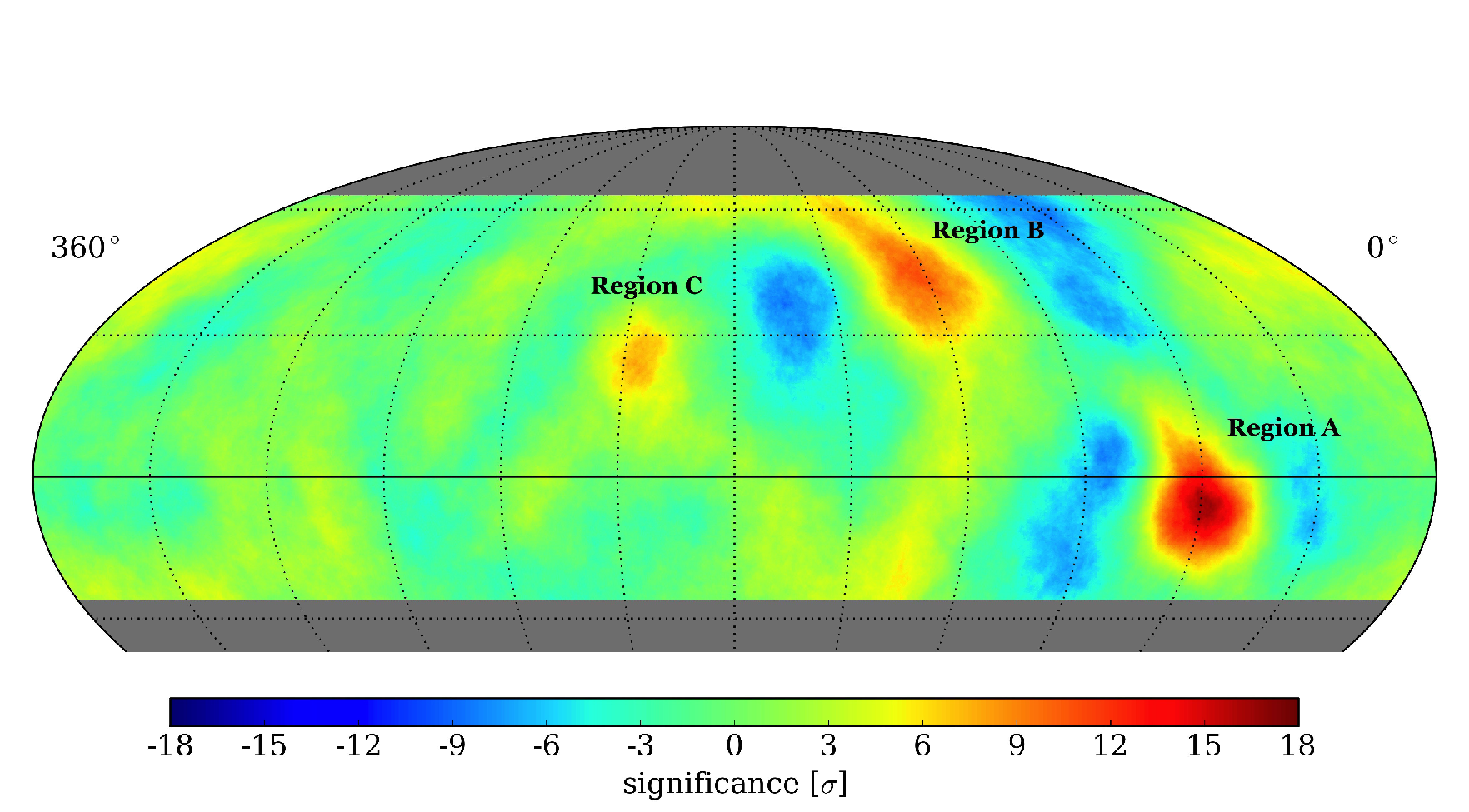The High-Altitude Water Cherenkov Observatory (HAWC) is designed to study the sky in TeV gamma rays and observe the most energetic objects in the known universe. Due to its size and location, the observatory will also observe millions of cosmic rays every day, allowing for very precise measurements of the cosmic-ray anisotropy.
HAWC recorded close to 50 billion events between June 2013 and February 2014, during the first months of data acquisition with the partially deployed detector, which showed significant small-scale anisotropies in the arrival direction of cosmic rays in the TeV region. The results, presented by the HAWC Collaboration in a paper now accepted for publication in The Astrophysical Journal, show three regions of significantly enhanced flux, in agreement with previous measurements in the Northern Hemisphere.

Anisotropies in the arrival direction distribution of TeV cosmic rays have been observed by several detectors in the Northern Hemisphere and by IceCube in the Southern Hemisphere. The anisotropy maps show large-scale deviations, at the level of 10-3in relative intensity, with smaller-scale structures at the 10-4 level. The origin of these anisotropies is not well understood, but the diffusion of cosmic rays from nearby sources in the galaxy or the magnetic fields of the heliosphere might account for the large-scale anisotropies while turbulences in the galactic magnetic field or additional heliospheric properties might be responsible for the small-scale structures. Other theories include the decay of quark matter in pulsars or the self-annihilation of dark matter as possible sources of some small-scale structures.
HAWC is a water-Cherenkov extensive air-shower array of close-packed tanks, each 4.5 m in height and 7.3 m in diameter and equipped with four photomultiplier tubes. Once completed, the observatory will comprise 300 water-Cherenkov tanks spread across 22,000 m2 at 4,100 m above sea level, near Puebla in Mexico. This paper presents the first measurement of the small-scale cosmic-ray anisotropy by the HAWC Collaboration. Large-scale deviations are already being studied, and new data with the full detector will allow HAWC researchers to learn more about the origin of these anisotropies.
“The detection of a small-scale cosmic-ray anisotropy is really just a first step for the HAWC detector. In six months and with one-third of the final detector running, we have observed features in the cosmic-ray sky that took previous experiments multiple years to see. While we do not yet understand what causes these features, their precise measurement will lead to new and more exciting questions about our universe,” explains Dan Fiorino, a PhD candidate at WIPAC and corresponding author of this paper.
The small-scale anisotropy has also been observed by the IceCube Neutrino Observatory in the southern sky. In the near future, HAWC and IceCube will perform a combined analysis of data from both hemispheres. “HAWC and IceCube combined cover almost the entire sky. With a joint analysis, we get a more complete picture of cosmic-ray arrival directions at these energies, and we can tackle some of the systematic issues that arise from the limited sky coverage of the individual experiments,” says Prof. Stefan Westerhoff, who leads the HAWC team at WIPAC and is also a member of the IceCube Collaboration.
+ Info “Observation of Small-scale Anisotropy in the Arrival Direction Distribution of TeV Cosmic Rays with HAWC,” HAWC Collaboration: A. U. Abeysekara et al. The Astrophysical Journal 796 (2014) 108, iopscience.iop.org, arXiv.org:1408.4805
